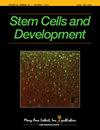ISL1 promotes human glioblastoma-derived stem cells self-renewal by activation of SHH/GLI1 function.
IF 2.5
3区 医学
Q3 CELL & TISSUE ENGINEERING
引用次数: 2
Abstract
Glioblastoma, the most aggressive primary heterogeneous primary brain tumor, is a glioma subtype of glioma that originates from the glial cells of the central nervous system. Glioblastoma stem cells (GSCs), situated at the top of the hierarchy, initiate and maintain the tumor and are largely accountable for glioblastoma resistance to the mainstay treatment and recurrence. The LIM homeobox transcription factor islet1(ISL1) induces tumorigenicity in various tumors; however, its function in GSCs has been less reported. We aimed to generate GSCs from surgical specimens of human glioblastoma and investigate the effect of ISL1 knockdown on GSCs. We established patient derived GSCs, determined cancer stem cell marker expression, and immunostained GSCs to assess cell viability and apoptosis. We demonstrated that ISL1 deletion decreased the GSC viability and proliferation, and upregulated apoptosis. Moreover, we performed enzyme-linked immunosorbent assay and western blotting and found that ISL1 knockdown affected the expression of sonic hedgehog (SHH) and its downstream regulator GLI1, and further validated these results by supplementing the cells with recombinant SHH. Our results suggested that ISL1 played a critical role in regulating GBM growth and that an ISL1/SHH/GLI1 pathway was required for the maintenance of GBM progression and malignancy. The regulation of GSC growth via ISL1 might be a mechanism of interest for future therapeutic studies.ISL1通过激活SHH/GLI1功能促进人胶质母细胞瘤衍生的干细胞自我更新。
胶质母细胞瘤是最具侵袭性的原发性异质性原发性脑肿瘤,是神经胶质瘤的一种亚型,起源于中枢神经系统的神经胶质细胞。胶质母细胞瘤干细胞(GSCs)位于层级的顶端,启动和维持肿瘤,并在很大程度上对胶质母细胞细胞瘤对主要治疗和复发的耐药性负责。LIM同源框转录因子islet1(ISL1)在各种肿瘤中诱导致瘤性;然而,它在GSC中的作用报道较少。我们的目的是从人类胶质母细胞瘤的外科标本中产生GSCs,并研究ISL1敲除对GSCs的影响。我们建立了患者来源的GSC,测定了癌症干细胞标志物的表达,并对GSC进行了免疫染色,以评估细胞活力和凋亡。我们证明ISL1缺失降低了GSC的活力和增殖,并上调了细胞凋亡。此外,我们进行了酶联免疫吸附测定和蛋白质印迹,发现ISL1敲低影响了声波刺猬(SHH)及其下游调节因子GLI1的表达,并通过用重组SHH补充细胞来进一步验证这些结果。我们的研究结果表明,ISL1在调节GBM生长中起着关键作用,并且ISL1/SHH/GLI1通路是维持GBM进展和恶性肿瘤所必需的。通过ISL1调节GSC生长可能是未来治疗研究感兴趣的机制。
本文章由计算机程序翻译,如有差异,请以英文原文为准。
求助全文
约1分钟内获得全文
求助全文
来源期刊

Stem cells and development
医学-细胞与组织工程
CiteScore
7.80
自引率
2.50%
发文量
69
审稿时长
3 months
期刊介绍:
Stem Cells and Development is globally recognized as the trusted source for critical, even controversial coverage of emerging hypotheses and novel findings. With a focus on stem cells of all tissue types and their potential therapeutic applications, the Journal provides clinical, basic, and translational scientists with cutting-edge research and findings.
Stem Cells and Development coverage includes:
Embryogenesis and adult counterparts of this process
Physical processes linking stem cells, primary cell function, and structural development
Hypotheses exploring the relationship between genotype and phenotype
Development of vasculature, CNS, and other germ layer development and defects
Pluripotentiality of embryonic and somatic stem cells
The role of genetic and epigenetic factors in development
 求助内容:
求助内容: 应助结果提醒方式:
应助结果提醒方式:


